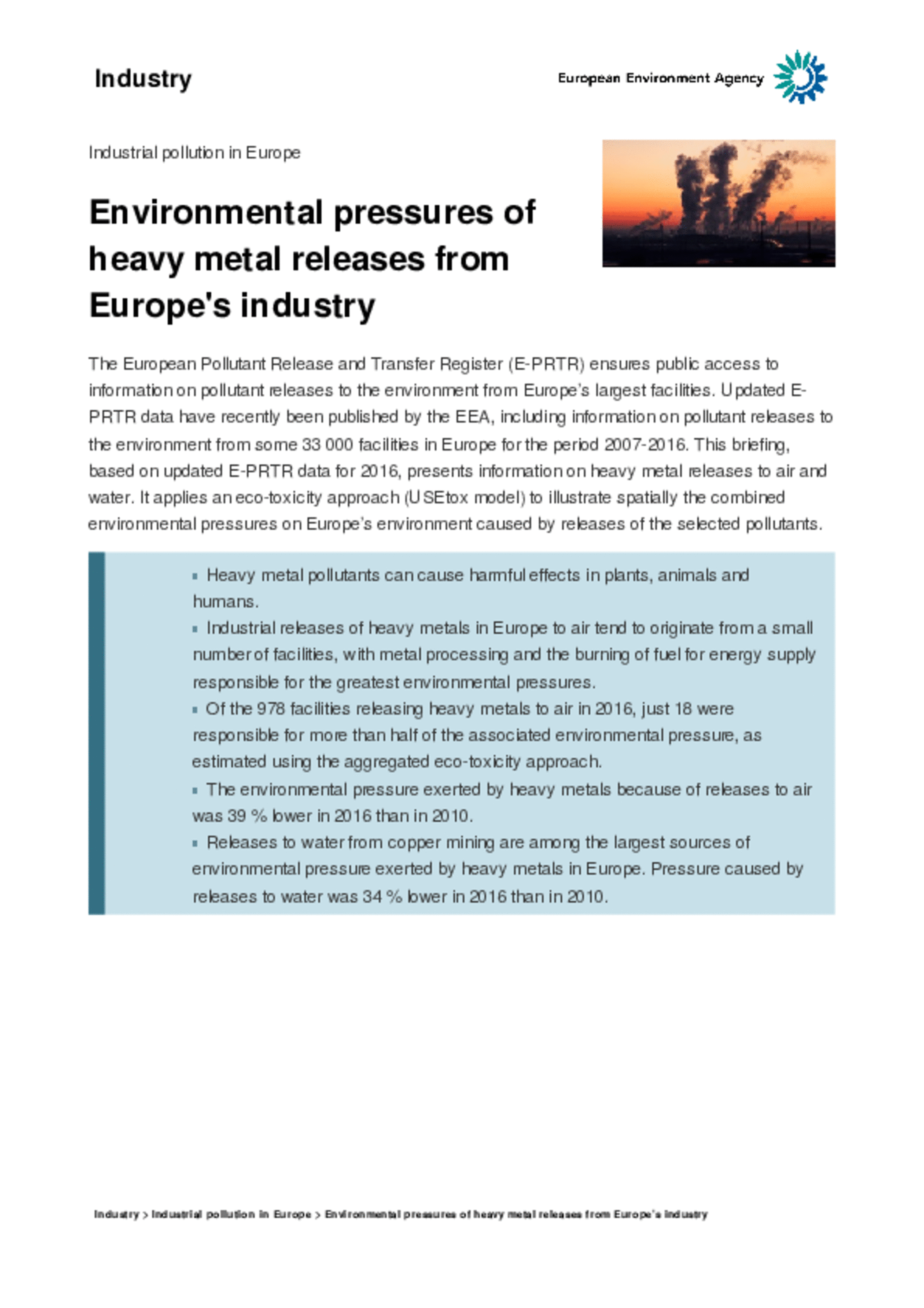All official European Union website addresses are in the europa.eu domain.
See all EU institutions and bodiesBriefing 3/2018
The European Pollutant Release and Transfer Register (E-PRTR) ensures public access to information on pollutant releases to the environment from Europe’s largest facilities. Updated E-PRTR data have recently been published by the EEA, including information on pollutant releases to the environment from some 33 000 facilities in Europe for the period 2007-2016. This briefing, based on updated E-PRTR data for 2016, presents information on heavy metal releases to air and water. It applies an eco-toxicity approach (USEtox model) to illustrate spatially the combined environmental pressures on Europe’s environment caused by releases of the selected pollutants.
ISBN: 978-92-9213-960-5

